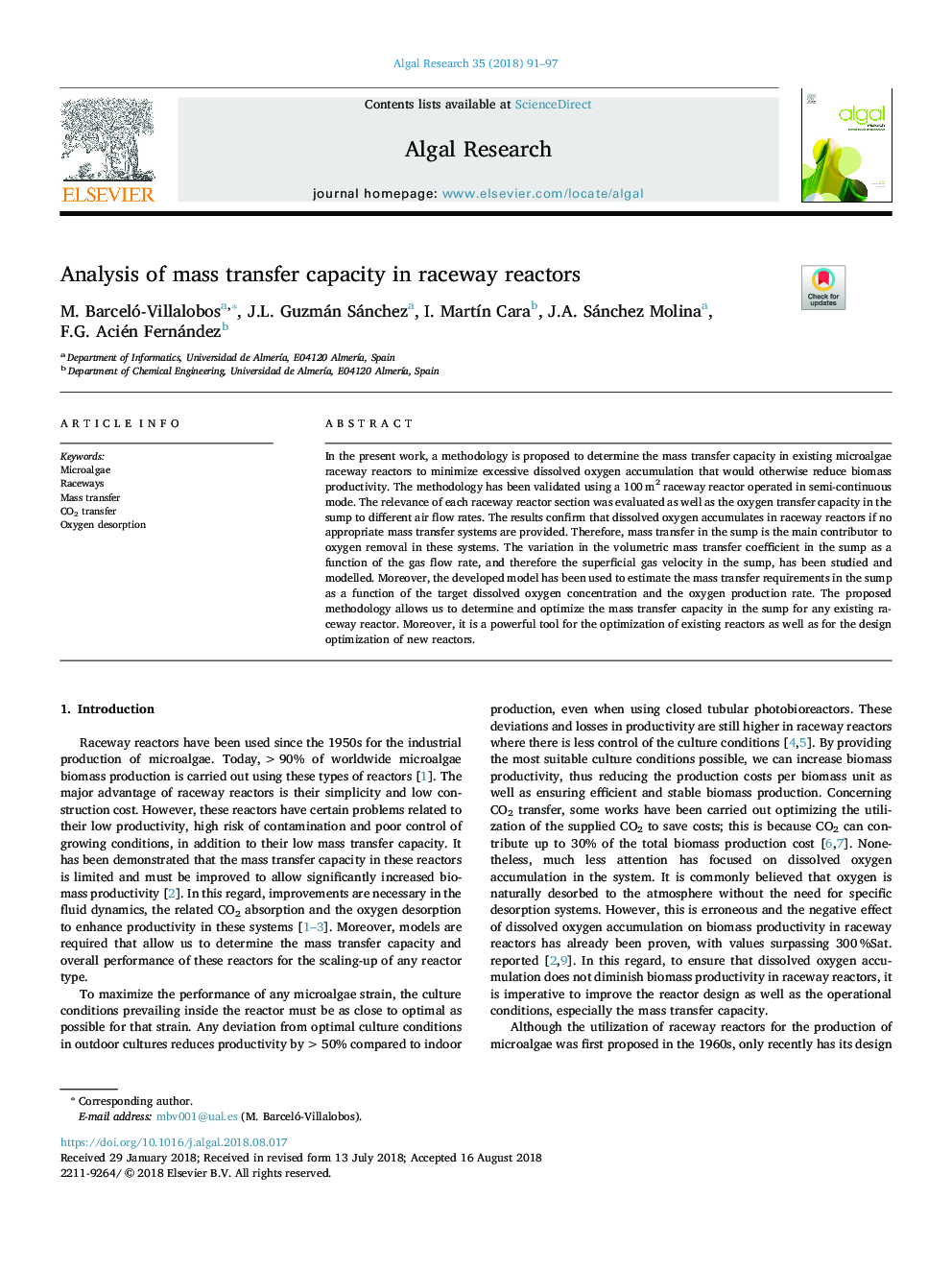| Article ID | Journal | Published Year | Pages | File Type |
|---|---|---|---|---|
| 8943512 | Algal Research | 2018 | 7 Pages |
Abstract
In the present work, a methodology is proposed to determine the mass transfer capacity in existing microalgae raceway reactors to minimize excessive dissolved oxygen accumulation that would otherwise reduce biomass productivity. The methodology has been validated using a 100â¯m2 raceway reactor operated in semi-continuous mode. The relevance of each raceway reactor section was evaluated as well as the oxygen transfer capacity in the sump to different air flow rates. The results confirm that dissolved oxygen accumulates in raceway reactors if no appropriate mass transfer systems are provided. Therefore, mass transfer in the sump is the main contributor to oxygen removal in these systems. The variation in the volumetric mass transfer coefficient in the sump as a function of the gas flow rate, and therefore the superficial gas velocity in the sump, has been studied and modelled. Moreover, the developed model has been used to estimate the mass transfer requirements in the sump as a function of the target dissolved oxygen concentration and the oxygen production rate. The proposed methodology allows us to determine and optimize the mass transfer capacity in the sump for any existing raceway reactor. Moreover, it is a powerful tool for the optimization of existing reactors as well as for the design optimization of new reactors.
Related Topics
Physical Sciences and Engineering
Energy
Renewable Energy, Sustainability and the Environment
Authors
M. Barceló-Villalobos, J.L. Guzmán Sánchez, I. MartÃn Cara, J.A. Sánchez Molina, F.G. Acién Fernández,
